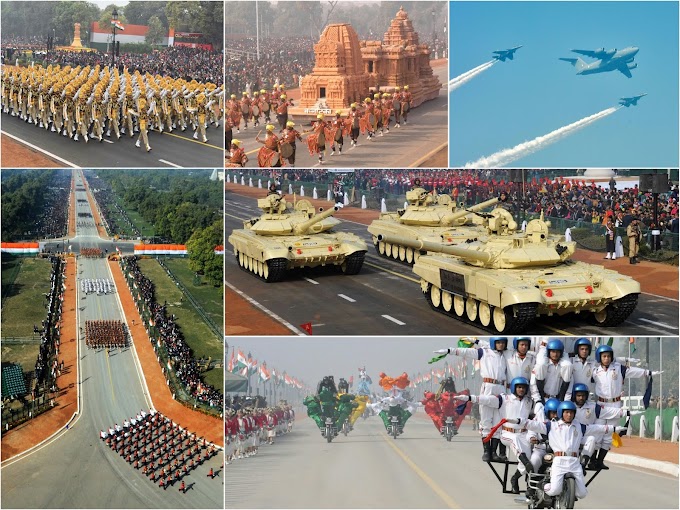LAND OF VICTORY - AYODHYA ( RAM MANDIR )
The construction of Ram Mandir is likely to start from Makar Sankranti
next year and is unlikely to involve a fresh ‘shilanyas’ (ground breaking ceremony).
Model:1
Model:2
Ram Janmabhoomi is the name given to the site that is hypothesized to be the birthplace of Rama, believed to be the seventh avatar of the Hindu deity Vishnu. The Ramayana states that the location of Rama's birthplace is on the banks of the Sarayu river in a city called "Ayodhya". A section of Hindus claim that the exact site of Rama's birthplace is where the Babri Masjid once stood in the present-day Ayodhya, Uttar Pradesh. According to this theory, the Mughals demolished a Hindu shrine that marked the spot, and constructed a mosque in its place. People opposed to this theory state that such claims arose only in the 18th century, and that there is no evidence for the spot being the birthplace of Rama.
The political, historical and socio-religious debate over the history and location of the Babri Mosque, and whether a previous temple was demolished or modified to create it, is known as the Ayodhya dispute.
In 1992, the demolition of the Babri Masjid by Hindu nationalists triggered widespread Hindu-Muslim violence.
Several other sites, including places in other parts of India, Afghanistan, and Nepal, have been proposed as birthplaces of Rama.
BABRI MASJID SITE
In 1611, an English traveller William Finch visited Ayodhya and recorded the "ruins of the Ranichand [Ramachand] castle and houses". He made no mention of a mosque. In 1634, Thomas Herbert described a "pretty old castle of Ranichand [Ramachand]" which he described as an antique monument that was "especially memorable". However, by 1672, the appearance of a mosque at the site can be inferred because Lal Das's Awadh-Vilasa describes the location of birthplace without mentioning a temple or "castle". In 1717, the Moghul Rajput noble Jai Singh II purchased land surrounding the site and his documents show a mosque. The Jesuit missionary Joseph Tiefenthaler, who visited the site between 1766-1771, wrote that either Aurangazeb (r. 1658–1707) or Babur had demolished the Ramkot fortress, including the house that was considered as the birthplace of Rama by Hindus. He further stated that a mosque was constructed in its place, but the Hindus continued to offer prayers at a mud platform that marked the birthplace of Rama. In 1810, Francis Buchanan visited the site, and stated that the structure destroyed was a temple dedicated to Rama, not a house. Many subsequent sources state that the mosque was constructed after demolishing a temple.
Police officer and writer Kishore Kunal states that all the claimed inscriptions on the Babri mosque were fake. They were affixed sometime around 1813 (almost 285 years after the supposed construction of the mosque in 1528 AD), and repeatedly replaced.
Before the 1940s, the Babri Masjid was called Masjid-i-Janmasthan ("mosque of the birthplace"), including in the official documents such as revenue records.Shykh Muhammad Azamat Ali Kakorawi Nami (1811–1893) wrote: "the Babari mosque was built up in 923(?) A.H. under the patronage of Sayyid Musa Ashiqan in the Janmasthan temple in Faizabad-Avadh, which was a great place of (worship) and capital of Rama’s father"
H.R. Neville, the editor of the Faizabad District Gazetteer (1870), wrote that the Janmasthan temple "was destroyed by Babur and replaced by a mosque." He also wrote "The Janmasthan was in Ramkot and marked the birthplace of Rama. In 1528 A.D. Babur came to Ayodhya and halted here for a week. He destroyed the ancient temple and on its site built a mosque, still known as Babur's mosque. The materials of the old structure [i.e., the temple] were largely employed, and many of the columns were in good preservation.
Opposition to the claim
A section of historians, such as R. S. Sharma, state that such claims of Babri Masjid site being the birthplace of Rama sprang up only after the 18th century. Sharma states that Ayodhya emerged as a place of Hindu pilgrimage only in medieval times, since ancient texts do not mention it as a pilgrim centre. For example, chapter 85 of the Vishnu Smriti lists 52 places of pilgrimage, which do not include Ayodhya. Sharma also notes that Tulsidas, who wrote the Ramcharitmanas in 1574 at Ayodhya, does not mention it as a place of pilgrimage.
Many critics also claim that the present-day Ayodhya was originally a Buddhist site, based on its identification with Saketa described in Buddhist texts. According to historian Romila Thapar, ignoring the Hindu mythological accounts, the first historic mention of the city dates back to the 7th century, when the Chinese pilgrim Xuanzang described it as a Buddhist site.
Proposed Ram Janmabhoomi temple
In 1853, a group of armed Hindu ascetics belonging to the Nirmohi Akhara occupied the Babri Masjid site, and claimed ownership of the structure. Subsequently, the civil administration stepped in, and in 1855, divided the mosque premises into two parts: one for Hindus, and the other for Muslims.
In 1883, the Hindus launched an effort to construct a temple on the platform. When the administration denied them the permission to do this, they took the matter to court. In 1885, the Hindu Sub Judge Pandit Hari Kishan Singh dismissed the lawsuit. Subsequently, the higher courts also dismissed the lawsuit in 1886, in favour of status quo. In December 1949, some Hindus placed idols of Rama and Sita in the mosque, and claimed that they had miraculously appeared there. As thousands of Hindu devotees started visiting the place, the Government declared the mosque a disputed area and locked its gates. Subsequently, multiple lawsuits from Hindus, asking for permission to convert the site into a place of worship.
In the 1980s, the Vishwa Hindu Parishad (VHP) and other Hindu nationalist groups and political parties launched a campaign to construct the Ram Janmabhoomi Mandir ("Rama birthplace temple") at the site. The Rajiv Gandhi government allowed Hindus to access the site for prayers. On 6 December 1992, Hindu nationalists demolished the mosque, resulting in communal riots leading to over 2,000 deaths.
In 2003, the Archaeological Survey of India (ASI) conducted excavations of the site on court orders. The ASI report indicated the presence of a 10th-century north Indian style temple under the mosque. Muslim groups and the historians supporting them disputed these findings, and dismissed them as politically motivated. The Allahabad High Court, however, upheld the ASI's findings. The excavations by the ASI were heavily used as evidence by the court that the predating structure was a massive Hindu religious building.
In 2009, the Bharatiya Janata Party (BJP) released its election manifesto, repeating its promise to construct a temple to Rama at the site.
In 2010, the Allahabad High Court ruled that the 2.77 acres (1.12 ha) of disputed land be divided into 3 parts, with 1⁄3 going to the Ram Lalla or Infant Lord Rama represented by the Hindu Maha Sabha for the construction of the Ram temple, 1⁄3 going to the Muslim Sunni Waqf Board and the remaining 1⁄3 going to a Hindu religious denomination Nirmohi Akhara.
The five judges Supreme Court bench heard the title dispute cases from August to October 2019. On 9 November 2019, the Supreme Court ordered the land to be handed over to a trust to build the Hindu temple. It also ordered to the government to give alternate 5 acre land to Sunni Waqf Board to build the mosque.
" JAY HIND "













0 Comments
Thank you